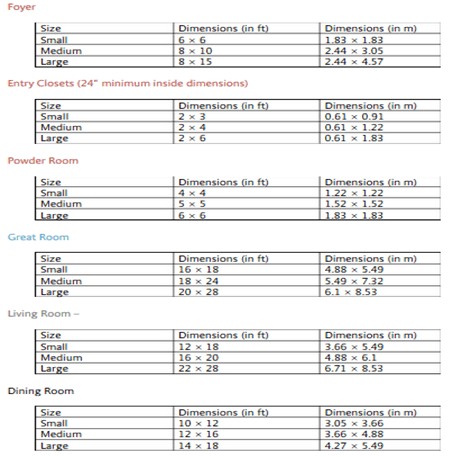1. Size of chowkhat sections for door and window is __________
a) 2cm*1.5cm
b) 10.16cm*10.16cm
c) 2.8″*1.4″
d) 10/3″*2/3″
Explanation: Nominal sizes of chowkhat is as mentioned below.
• 4 inch x 2.5 inch
• 4 inch x 3.0 inch
• 5 inch x 2.5 inch
• 10inch x2.0 inch
• Custom size is available.
2. Size of C.S windows is ___________
a) 5″*6″
b) 4’*2′
c) 4’*2.5′
d) 11″*3’5″
Explanation: A casement window is a window with a hinged sash that swings in or out like a door comprising either a side-hung, top-hung (also called “awning window”; see below), or occasionally bottom-hung sash or a combination of these types, sometimes with fixed panels on one or more sides of the sash. In the USA, these are usually opened using a crank, but in parts of Europe they tend to use projection friction stays and espagnolette locking. Formerly, plain hinges were used with a casement stay. Handing applies to casement windows to determine direction of swing; a casement window may be left-handed, right-handed, or double. The casement window is the dominant type now found in modern buildings in the UK and many other parts of Europe
3. Which is not the nominal thickness of D.P.C?
a) 2cm
b) 2.5cm
c) 4cm
d) 2.5″
Explanation: Damp proofing is accomplished several ways including:
• A damp-proof course (DPC) is a barrier through the structure designed to prevent moisture rising by capillary action such as through a phenomenon known as rising damp. Rising damp is the effect of water rising from the ground into property. The damp proof course may be horizontal or vertical. A DPC layer is usually laid below all masonry walls, regardless if the wall is a load bearing wall or a partition wall.
• Integral damp proofing in concrete involves adding materials to the concrete mix to make the concrete itself impermeable.
• Surface coating with thin water proof materials for resistance to non-pressurized moisture such as rain water or a coating of cement sprayed on such as shotcrete which can resist water under pressure.
• Cavity wall construction, such as rainscreen construction, is where the interior walls are separated from the exterior walls by a cavity.
• Pressure grouting cracks and joints in masonry material.
4. Which size cannot be possible for a room?
a) 3.0m*3.60m
b) 12’*14′
c) 360cm*360cm
d) 10’*9′
Explanation: Standard sizes of rooms is as given below.

5. Height of plinth can be _______
a) 48″
b) 11′
c) 1′
d) .5″
Explanation: The plinth height is provided essentially to protect the superstructure from dampness which may seep in due to direct contact from the ground. The top of plinth level is provided with damp proof course which is an additional protection against dampness. Plinth height also prevents storm water/overflowing drainage from directly entering the building in case of heavy rainfall. Generally plinth level is provided at about 300–450 mm above finished ground level. It is suggested that plinth level should be decided by considering the top of the road level, the former should be kept atleast 150 mm higher.
6. Insulation layer in roof can be _____________
a) 2.5cm
b) 1.5″
c) Only a
d) 2.5cm and 1.5”
Explanation: Insulation acts as a barrier to heat flow and is essential for keeping your home warm in winter and cool in summer. A well-insulated and well-designed home provides year-round comfort, cutting cooling and heating bills by up to half. This, in turn, reduces greenhouse gas emissions.
Climatic conditions influence the appropriate level and type of insulation. Establish whether the insulation is predominantly needed to keep heat out or in (or both). Insulation must cater for seasonal as well as daily variations in temperature.
7. Unit of payment in FPS of throating is ____________
a) per m
b) per r ft
c) per ft
d) per sq ft
Explanation: Throating can be defined as a small groove cut on the underside of projecting chaajjas, cornice copying to discharge the rain water without trickling down to the wall.
8. Unit of payment in MKS of painting, varnishing is ___________
a) per sq m
b) sq cm
c) cu m
d) m
Explanation: To ensure your finished oil or acrylic painting to stay looking its best then adding the right varnish in the right way will be a sound investment. Varnish protects the painting from dirt and dust and evens out the painting’s final appearance, making it all equally glossy or matt.
Over the years dirt and dust will stick to the varnish rather than the painting and when the time is right, the varnish itself can be removed and the painting re-varnished to look as good as new.
9. Unit of payment in MKS of beam is _____________
a) per cu m
b) cu m
c) per sq ft
d) per sq m
Explanation: A beam is a structural element that primarily resists loads applied laterally to the beam’s axis. Its mode of deflection is primarily by bending. The loads applied to the beam result in reaction forces at the beam’s support points. The total effect of all the forces acting on the beam is to produce shear forces and bending moments within the beam, that in turn induce internal stresses, strains and deflections of the beam. Beams are characterized by their manner of support, profile (shape of cross-section), length, and their material.
10. Unit of payment in MKS of RCC bars is _____________
a) per q
b) per kg
c) per tonne
d) per cu m
Explanation: A rebar, or reinforcing bar, is a common steel bar, and is commonly used in reinforced concrete and reinforced masonry structures. It is usually formed from carbon steel, and is given ridges for better mechanical anchoring into the concrete. It can also be described as reinforcement or reinforcing steel.